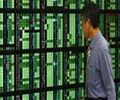Asia week ahead: China’s 15th Five Year Plan and South Korea’s interest rate decision

China: 15th Five Year Plan, while Q3 GDP expected to slow
It will be a busy start to the week in China. The Fourth Plenary Meeting took place from Monday to Wednesday, with the main focus expected to be on discussing China’s 15th Five-Year Plan. This plan will cover the main development plans for China between 2026 and 2030. Although the complete Five Year Plan will likely not be available until next year’s Two Sessions, we will probably get some information on the main themes discussed. Of particular concern are development priorities, including how to increase consumption, encourage innovation and strategic focus going forward.
Monday morning started with a decision on loan interest rates. No changes are expected after the Central Bank of China (PBOC) remained silent. Also on Monday, China reports third-quarter GDP. Barring a stronger-than-expected recovery in September – we currently expect slight declines in retail sales, industrial production and fixed asset investment growth – the data will likely show China slowing substantially to 4.5% year-on-year. We will also have property price data for September. Prices have been on a negative trajectory in recent months. In the absence of new stimulus, there is no reason to expect a significant turnaround.
South Korea: BoK rate cut likely to be delayed
The Central Bank of Korea’s policy meeting on Thursday will be the highlight of the week. Due to rising housing prices in the Seoul area, USD/KRW exceeding 1,400, and ongoing uncertainty regarding tariff negotiations with the US, the BoK rate cut cycle may be postponed until November – or even next year. The government announced the latest measures on mortgage and housing purchases this week, but it will take time to see the impact.
Additionally, the outcome of the $350 billion investment pledge is another major factor influencing the BoK’s currency and policy stance. Therefore, the BoK can monitor housing market developments and tariff discussions before making further decisions. We believe growth and inflation will remain close to the BoK’s current projections. However, downside risks have increased significantly recently.
Japan: Exports and inflation are expected to recover
Ahead of the Bank of Japan meeting on October 30, this week’s export updates, following the 15% US tariff agreement and the latest inflation developments, are of particular interest. We expect exports to increase to 4.0% YoY, as shipments of cars and chip-making machines return to normal. Imports will likely fall 0.5%, largely due to lower global commodity prices. We expect further export normalization in the coming months after a trade agreement was reached in September. Meanwhile, inflation is expected to rise to 2.9% YoY in September, with core prices likely to remain above 3.0%. The recent slowdown in inflation is largely due to government subsidies for energy and social welfare programs.
Taiwan: Exports are expected to recover due to reciprocal tariffs
It’s been a quiet week in Taiwan. September export orders, released on Tuesday, are expected to recover to 25.4% YoY. Trade data has generally held up better since reciprocal tariffs were introduced. Taiwan also published its industrial production data on Thursday, which is expected to fall to 13.6% YoY.
Source: ING
